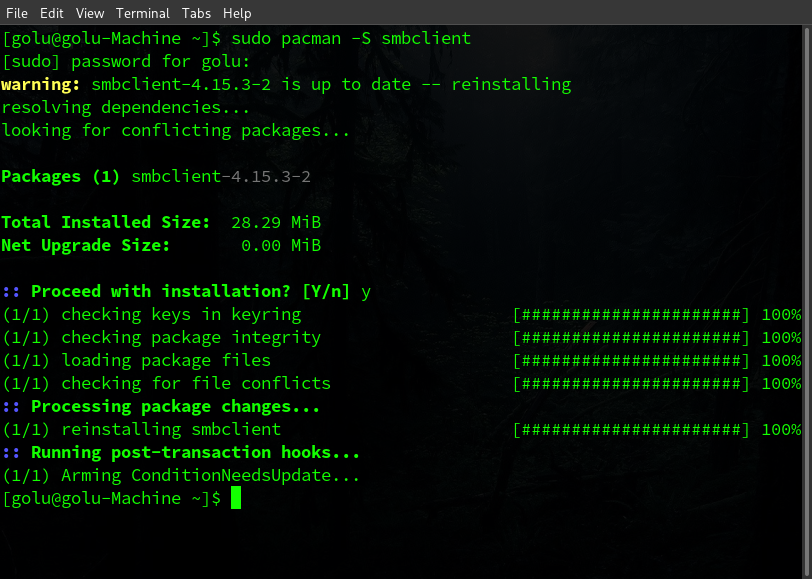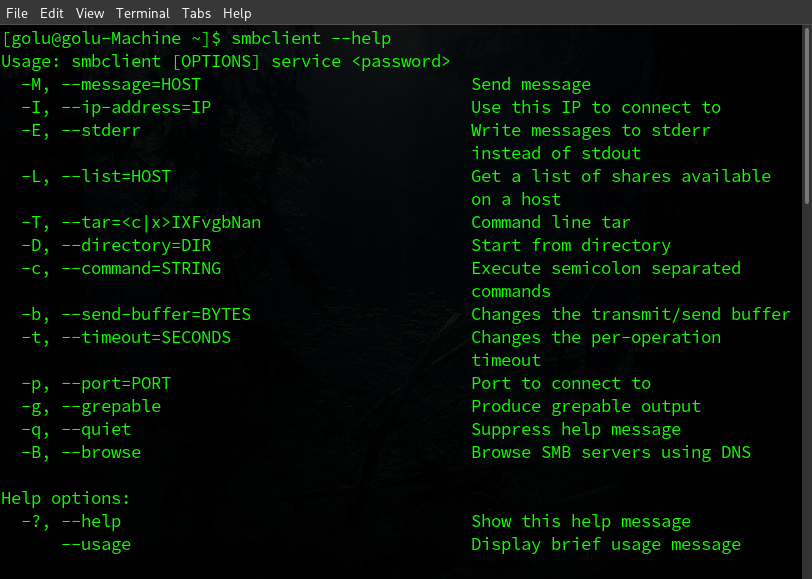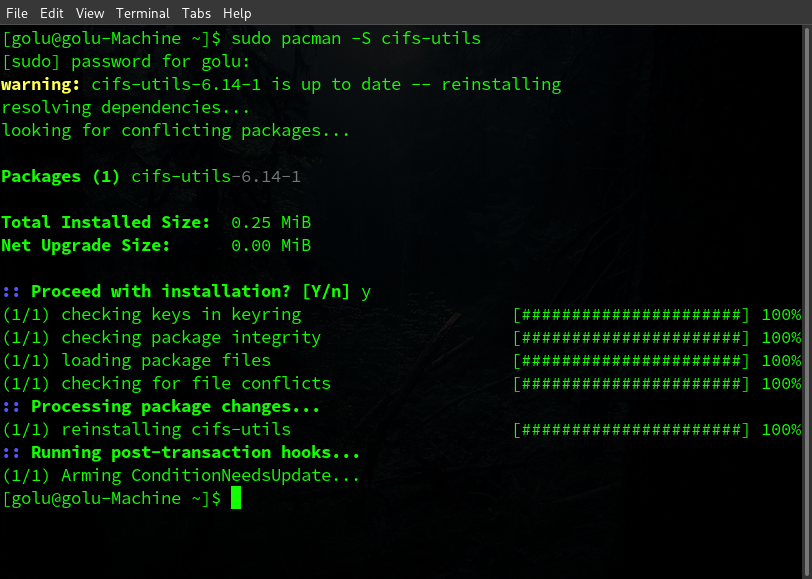Smbmount is a command in the Linux family of operating systems used to mount the smb file system on the system over the internet connection. smbmount was earlier widely used, but with the depreciation of the smb protocol, its use also depreciated over time. Over time the CIFS protocol gained popularity and the SMB protocol faded. The SMB (Server message block) is a protocol used to share files and requests over the internet from a remote host. This article provides complete details regarding the smbmount command and the protocols and smbclient command that are now used.
Contents
What is smbmount?
The smbmount system is a Linux command that mounts the SMB file system on the operating system. In Linux, Before any data can be transferred from a storage device, its file system needs to be mounted using the mount command. The smb mount command is similar to the mount, except it is used to mount the remote host’s file system over the internet with the SMB protocol. The smb mount command is no longer shipped with most of the current Linux distros as the modern transfer protocols have replaced the SMB protocol.
SMB vs CIFS
SMB is short for Server Message Block, and CIFS is short for Common Internet File System. People often use both of the terms interchangeably, although both of the terms practically mean the same thing. The SMB is a protocol, i.e., a set of instructions followed by the computers to communicate with each other. Being a protocol SMB is not a complete software or implementation itself. CIFS, on the other hand, is Microsoft’s implementation of the SMB protocol. SMB was originally designed to share files and directories among different computers in a local network setting.
smbmount command not found
The Smbmount command was once widely used to mount a remote file system on your computer, but it no longer exists now, and when a user tries to run the smbmount command, an error occurs. Even if the user tries to install it using the package manager, it is no longer found in the repositories. There are now new alternatives to use instead of smbmount to get your task done. The following are the two best alternatives we recommend to use instead of smbmount.
smbclient instead of smbmount
SMB mount command was earlier used to mount the remote host file system on the system using the SMB protocol. But, now, the smbclient utility is used to access the server’s resources using SMB/CIFS protocol. The smbclient is part of the samba server suite of programs that allows the users to share their resources on a local network.
How to install smbclient?
smb client is a part of the Samba software suite. If you have any version of samba installed on your system, then chances are you already have smbclient installed on your system. But you could also install smbclient on your system independent of the whole samba suite. Follow the given steps to download them and install smbclient on Linux.
- Open terminal emulator. (ctrl + alt + T)
- Enter Sudo pacman -S smbclient (on arch based) or Sudo apt install smbclient (on debian based).
- Enter your root password.
- Enter Y and hit enter.

How to connect to smb server using smbclient
After installing smbclient, you could run the smbclient –help command to see all the available options with the command. Follow the given commands to connect to an smb/CIFS server using smbclient.

smbclient -L server_name -U user
// server_name is your server's domain or IP
smbclient /server/share -U user
// Now Enter your password to connectsmbclient /server_name/share -U user%password
// This commands connects to the server directlyHow to mount smbfs system without smbmount
Since smbmount has been depreciated from most of the recent Linux distros, there are other methods of mounting a remote file system on your computer. You might have to download some utilities that are again part of the Samba suite. Follow the given steps to count an smbfs on your system.
- Open the terminal emulator. (ctrl + alt + T)
- Install cifs-utils using your default package manager.
- After installing the necessary utilities create a mount point for the file system
- In the termianl, type sudo mkdir /mnt/local_share. This command would would create a mount directory named local_share.
- Now run the following command to mount the file system.

The -t in the command specifies the type of file system to be mounted. If any issue or error is encountered, try changing the type from cifs to smbfs. And replace the Remote_server_IP with your server’s IP or domain.

How to use smbmount in Ubuntu?
As mentioned earlier, the smbmount command is deprecated and no longer ships with most Linux distros. But the method mentioned above can be employed in Ubuntu to get the file system mounted. You only have to keep one thing in mind when following the above steps that the default package manager for the Ubuntu OS is dpkg. To install the cifs-utils, use the following command instead of Pacman and regularly follow the steps mentioned above.
$ sudo apt-get install cifs-utilsSmbmount can’t find in /etc/fstab
smbmount “can’t find the device in /etc/fstab” is the error message shown when the user tries to mount a file system on its system without specifying the mount point or directory for the file system. If no mount point is set in with the mount command, it looks for a mount directory in the /etc/fstab file, and when no device or mount point is found, this error occurs. To prevent this error, always provide a mount point for your remote file system or create a new one.
sudo mkdir /mnt/my_fs
// create a mount point directory.
sudo mount -t cifs /_remmote_fs_link /mnt_fs
// mount the file system to the directory.FAQs on Smbmount
What is a networking protocol?
A protocol is a predefined set of rules and instructions that must be followed by both parties before and during the sharing of data or establishing a connection.
What is the default package manager for the fedora Linux distro?
DNF is the default package manager for Fedora and Red Hat Enterprise Linux (RHEL).
How to unmount a File system?
Use the umount command with the file system’s mount point to unmount a file system.
Conclusion
The smbmount is a command in the Linux operating system that was widely used to mount a remote file system on the user’s system. But, due to the rise of other protocols and methods to mount the file system, the smbmount command depreciated over time. This article provided you with two different ways to access and mount the remote file system without using the smbmount command.









